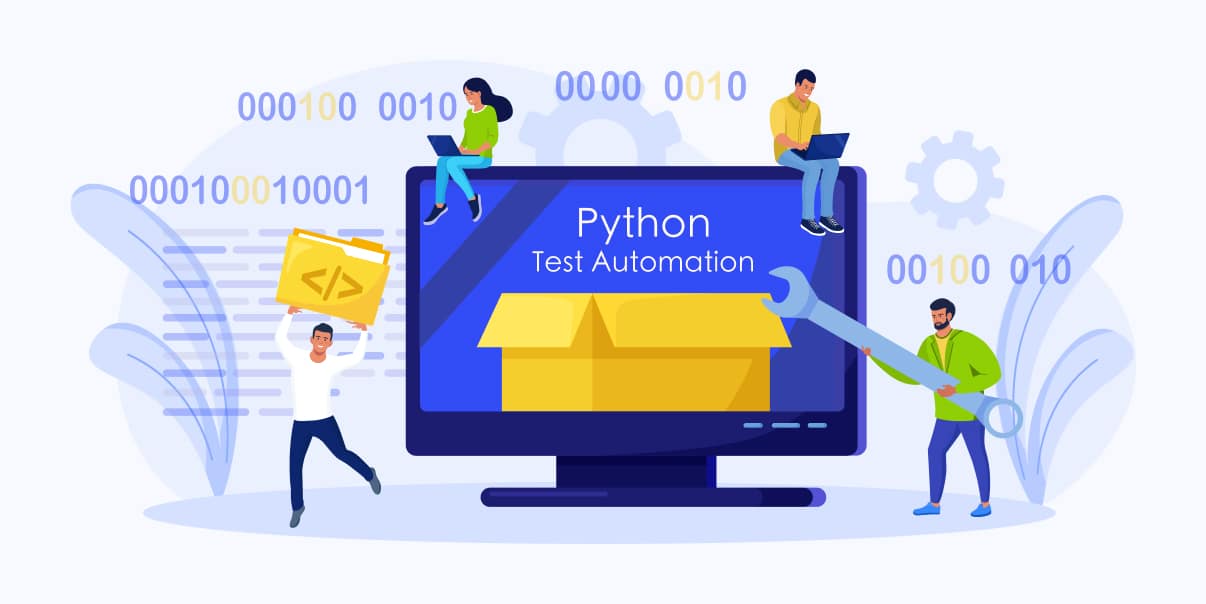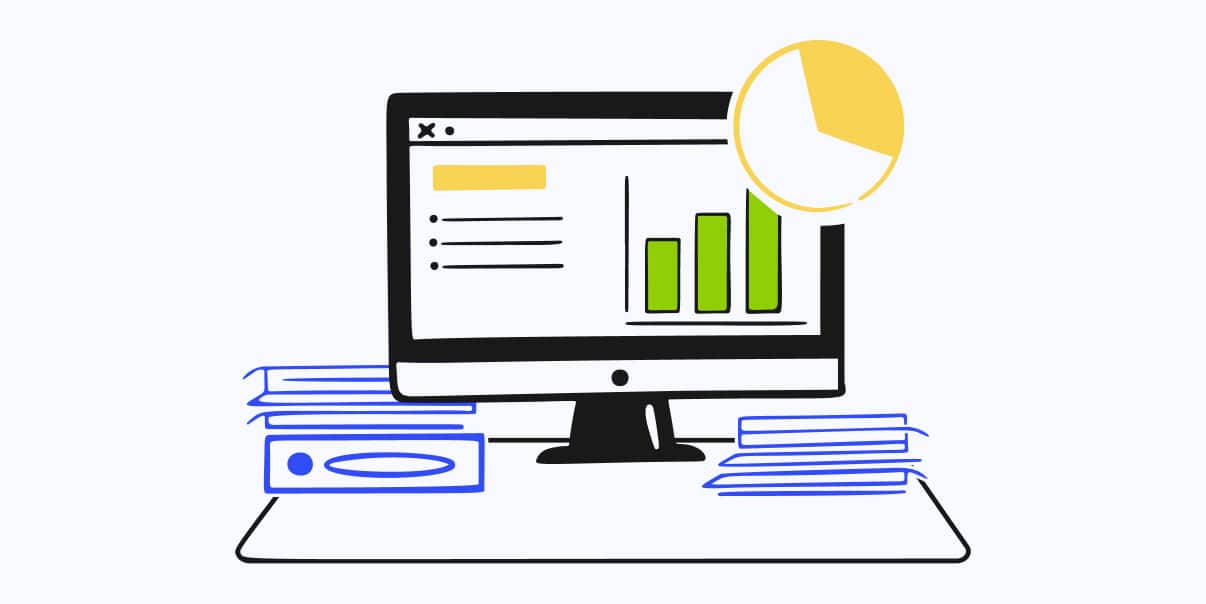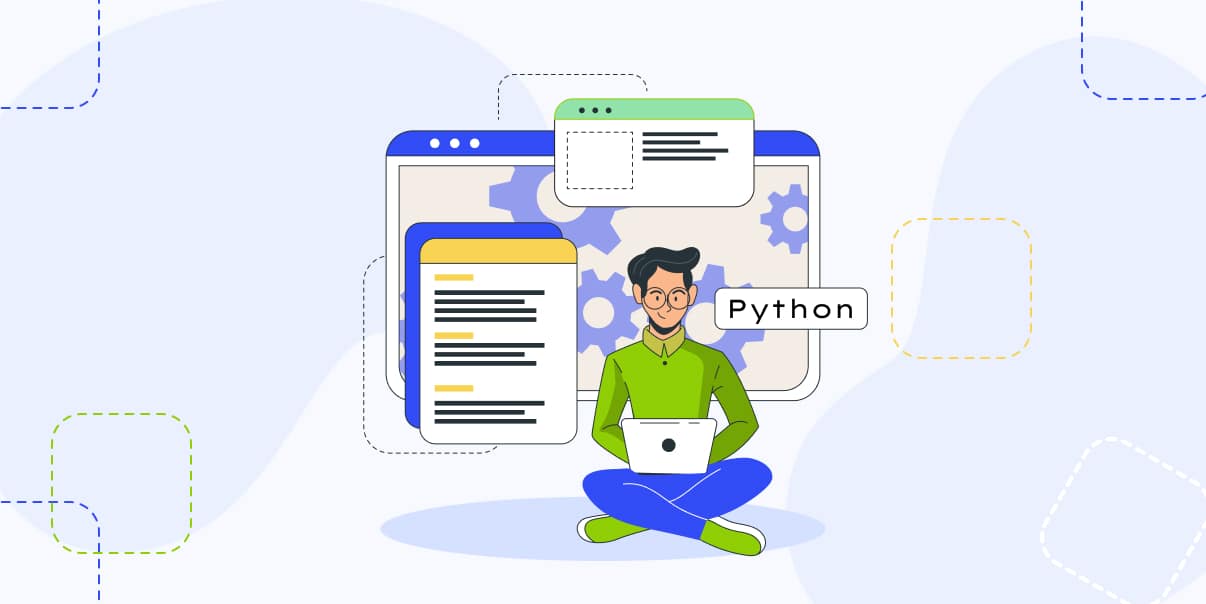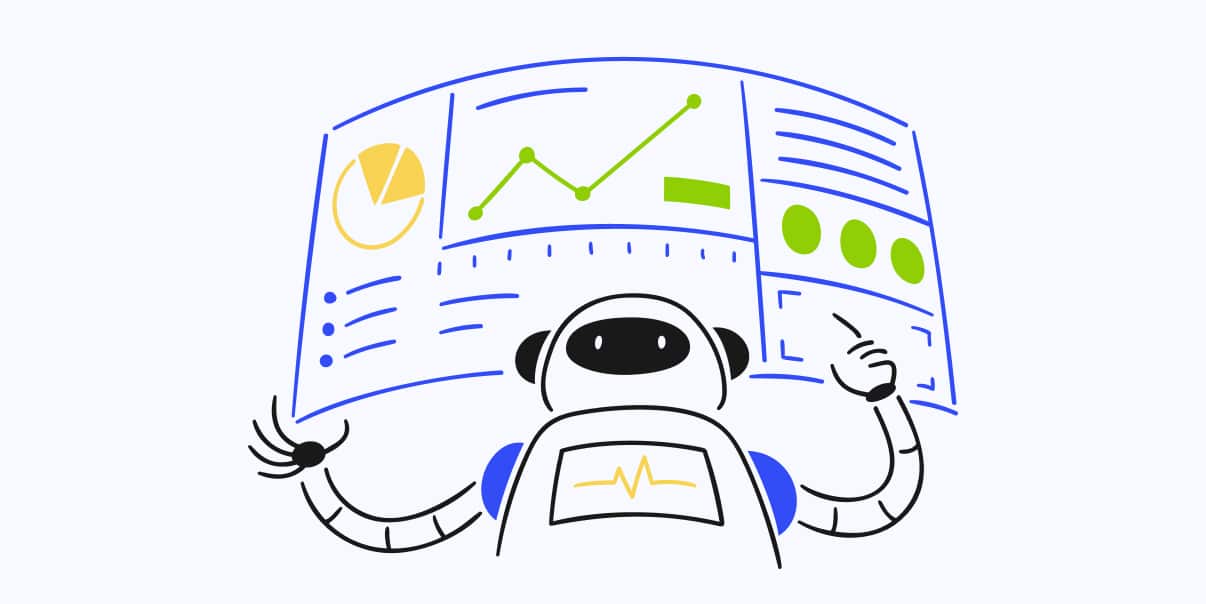Python Test Automation: Tips and Best Practices for Efficient Tests

A Python automation test uses tools and libraries to ensure your apps function correctly. Developers can save time and effort by setting up an automated software testing environment.
This article will explore ways to set up the environment for python automation tests with the right tools and processes.
What Is Python Test Automation?
Python is a high-level, general-purpose language created by Guido van Rossum. Python has powerful scripting, data analysis, machine learning, and web development libraries.
Companies worldwide use Python because it is flexible and scalable. Some popular Python apps are Dropbox, Instagram, Quora, and Reddit. Even Big G (Google) uses Python for many of its products.
Types of Testing in Python
Python is one of the most popular programming languages due to its simple syntax and powerful libraries. As such, many companies are using Python for their products, from Dropbox to Google. With the proper setup, you can use Python automation tests to ensure that apps work correctly. Let’s explore the different types of automated software testing available in Python.
Unit Testing
This test method is the most basic form of Python automation test. Unit testing checks individual functions, classes, or modules in isolation from other parts of the code. The unit testing framework ensures that each component works as expected so you can spot errors quickly.
Setting up Unit Tests in Python
When setting up unit tests in Python, you must install a test runner and write the code. You can use unit test, nose2, pytest, or another library as your test runner. After installing the library, you must design the tests to ensure that each part of the test code works correctly. Once you set up all the tests, you can run them to ensure your application functions properly.
Assert Statements
Assert statements are an essential part of Python test automation. These statements check the expected output of a function against its actual result. When the two values do not match, the assertion fails, and you know where your code needs fixing.
Integration Testing
Integration testing checks how different parts of the code interact with each other. This test ensures that all components work together and deliver the expected result.
Setting up Integration Tests in Python
Integration tests are essential for adequately testing applications. To set up integration tests in Python, you must install a test runner and write the test code for each component. Once you have written all the tests, you can run them to ensure your app meets the intended requirements. Like unit tests, you can use test runners such as unittest, nose2, or pytest to set up and run integration tests.
Testing Multiple Components of an Application
Integration tests inspect multiple components of an application. This test ensures that all parts work together as expected and deliver the intended results. For example, an app may have separate registration, payment, and email notification components. Integration tests help these components work together so users can complete their tasks.
Functional Testing
Functional tests test an application’s behavior against predetermined criteria. It checks if the app meets the requirements and functions correctly on multiple platforms and browsers. It helps to identify bugs and ensures apps function correctly in different environments.
Setting up Functional Tests in Python
You must install the correct libraries when setting up functional tests in Python. You can use PyTest, Robot Framework, or other automation test libraries as your test runner. After installing the library, you must write code for each functional test.
Testing User Interfaces
Functional tests are essential for testing user interfaces (UI). It checks if the UI meets the requirements, functions correctly in different environments, and is fast and responsive. Functional tests also ensure that users have a seamless app experience.
End-to-End Testing
End-to-end tests check an application’s entire process from start to finish. It ensures that all elements work correctly together and the app meets the requirements. End-to-end tests are essential for checking complex applications with multiple components.
Setting up End-to-End Tests in Python
When setting up end-to-end tests in Python, you must install the suitable library and write code for each test. You can build good test cases using Robot Framework, Pytest, or other libraries. After installing the library, you must write code for each end-to-end test. Then, you can run all the tests to ensure your app functions correctly.
Testing Complete Application Flow
End-to-end tests check the complete application flow. It allows you to check if the app functions correctly from start to finish. For example, an e-commerce app must have all its parts working together so customers can buy goods online without hiccups. End-to-end tests help ensure that this process works as expected.
Preparing and Setting up an Environment for Automation Testing Using Python
Setting up an environment for the testing process takes time and effort. But with the right tools and techniques in place, you can be sure that your app functions correctly. Let’s explore what you need to do to set up your environment for automation testing using Python.
Obtain Tools/Software for Automation Testing Framework
Ensure you are using the right Python test automation tools and software. You can use Robot Framework, Pytest, or other libraries as your test runner. You can also use an integrated development environment like Visual Studio Code or PyCharm. Having these tools in place makes writing tests and debugging errors easier.
Choose a Suitable IDE for Building the Automation Framework
Once you have the necessary tools in place, it’s time to choose your preferred IDE. Visual Studio Code is popular because of its advanced features and support for multiple languages. It also has an intuitive user interface that makes writing tests and debugging errors quick and easy. PyCharm is another widely used IDE for automation testing. It offers code analysis, debugging, and testing tools that enable you to create a robust test framework.
Create a Project Structure That is Easy to Maintain and Scale
Once you have selected your IDE, it’s time to create a project structure that is easy to maintain and scale. Start by organizing the tests into sub-folders based on their type. You can also add a test data folder to access test data quickly. Create separate folders for resources and reports to assess the test results. A well-structured project is easier to maintain and scale your automation tests.
Design Framework Components
The components of your automation framework are the building blocks for your tests. To create automated test scripts, you can use the Page Object Model (POM) or keyword-driven testing. POM is a design pattern that improves code readability and reduces duplicated code. Keyword-driven testing also makes it easier to maintain and scale the tests by separating the test data from the code.
Configure Environment Variables Accordingly
You must configure the environment variables to ensure your tests run correctly. The environment variables hold the configuration settings for the entire project. These include:
- PYTHONPATH. This variable is used to specify additional directories where Python should look for modules and packages. In the context of test automation, you should set the PYTHONPATH variable to include the paths to your test libraries and custom modules.
- SELENIUM_REMOTE_URL. If using Selenium WebDriver for browser automation, you must point this variable to the Selenium server’s URL. It allows you to run tests on a remote machine or a Selenium Grid setup.
- DJANGO_SETTINGS_MODULE. When testing a Django web app, you can set this environment variable to specify the settings module used during test execution. It allows you to use different test settings, such as a test database or enabling test-related configurations.
- TEST_DATA_PATH. You can create a custom environment variable to store the path to your test data files. It lets you easily access test data across different test modules without hardcoding file paths in your test code.
Setting up environment variables is essential to ensure the tests run correctly. These variables are necessary for the tests to locate the required files and resources needed to execute the tests properly. They also allow you to configure settings such as log levels, report formats, and locations of test data files. They facilitate easy maintenance and scalability of the tests.
Install and Configure Any Third Party Libraries if Needed
Your automation framework may require additional libraries to run correctly. You can install and configure any third-party libraries if needed. For example, you can use Selenium or Appium for web and mobile automation testing. Installing and configuring these libraries helps make your tests more robust and reliable.
Write Automated Scripts Using Suitable Scripting Language and Python Standard Library
After you have set up your environment and configured the libraries, it’s time to write automated scripts using Python. When writing tests, start with small tests and then add more complex ones. It will help you understand the test flow and debug errors quickly.
Execute Tests Using the Chosen Scripting Language and Python Stand Library
Once you have written all the tests, execute them using the chosen scripting language and library. Depending on your requirements, you can run all the tests at once or a single test case. After running tests, you can analyze the results to identify any errors in your code.
Monitor Results and Debug Errors Where Necessary
It is essential to monitor the results of each test and debug errors where necessary. If there are errors in your code, you can use debugging tools like pdb and ipdb to find the root cause. Debugging helps spot errors quickly and ensures that the features work correctly.
Popular Python Testing Frameworks
Frameworks are the essential components of automation testing. They make writing tests, debugging errors, and maintaining code more manageable. Here are some of the popular Python test frameworks:
- unittest: It is the default python testing framework. It allows you to write tests and debug errors quickly.
- Pytest: Pytest is a popular testing framework used by python developers worldwide. It has an intuitive user interface and powerful debugging capabilities. It is handy for parallel testing.
- Nose2: Nose2 is a modern testing framework for Python that enables you to write tests quickly and easily. With its advanced features, it simplifies the test writing process.
- Robot: This open-source framework enables you to test web applications, databases, APIs, and more. You can also use it to automate acceptance testing.
- DocTest: DocTest is a testing framework for Python that lets developers write tests in plain text. It makes it easier to write and maintain tests quickly.
- Testify: Testify is a modern test framework for Python. It has powerful assertions that make it easy to write tests and debug errors quickly. It is ideal for integration and system testing.
Comparison of Different Testing Frameworks
Automation testing is essential for writing tests, debugging errors, and maintaining code. Knowing these frameworks’ differences is critical to choosing the right one for your project.
These test frameworks have their strengths. However, unit test is considered the best python testing framework. Its simplicity makes it ideal for beginners or those who need quick results without sacrificing quality.
Advantages and Disadvantages of Using Python for Test Automation
What makes Python popular for test automation? Let’s explore Python’s pros and cons in setting up an environment, writing tests, and debugging errors.
Advantages of Using Python for Test Automation
We all know how tedious and time-consuming test automation can be. Here are some of the benefits of using Python test automation.
Easy to Learn and Use
Python is an easy language to learn, with a simple syntax. It is also suitable for beginners, as it requires minimal coding knowledge. As a result, you can create automated tests quickly and easily.
Large Community and Support
With Python’s large and vibrant community, support and guidance are always available. You can find answers on coding forums or websites offering tutorials.
Wide Range of Libraries and Frameworks
Python has many libraries, from web development to artificial intelligence. Developers will find it easy to choose the suitable library for their needs. Frameworks like Selenium and PyTest make test automation easier using pre-built methods.
Cross-Platform Compatibility
Python code works across platforms. Creating automated tests on Windows, Mac, and Linux systems is easy. It means your tests can run on any platform without additional coding.
Automated Testing
With Python, you can automate tests and run them on a regular schedule. It lets you focus on other tasks while your tests run without manually monitoring progress.
Disadvantages of Using Python for Test Automation
While Python offers many benefits, there are some drawbacks you should consider. Let’s explore these disadvantages below.
Slower Execution Speed
As an interpreted language, Python takes more time to execute tests than compiled languages like Java. As a result, running automated tests can take longer than expected.
Steep Learning Curve for Advanced Features
Python has many advanced features, but these require a deep understanding of the language. It means developers can take time to master test automation with Python.
Lack of Built-in Support for GUI Testing
Python doesn’t have built-in support for GUI testing. As a result, developers must use libraries like Selenium or PyAutoGUI to automate tests on the UI.
Limited Support for Mobile Automation
Python has little support for mobile automation. It is suitable only for Android and requires additional coding to run tests on iOS devices.
Maintenance and Debugging
Python code can sometimes be difficult to maintain and debug. The maintenance and debugging challenges are not inherent to Python but may arise from complex test frameworks and automation code.
Integration With Other Tools
Python lacks advanced integration with other test management tools. Developers must use other libraries like Jenkins or TestRail to integrate the tests into their projects.
Best Practices for Python Test Automation
Automation testing is a must for any software project, and Python is one of the most popular languages. What are the best practices for using Python in automation testing?
Using Test Automation in Agile Development
Software testing helps us find defects quickly, as it is executed while development progresses. This way, we can identify and fix issues early in the process. Introducing test automation into the agile approach can improve quality while saving time.
Writing Maintainable Tests
Writing maintainable tests is essential for long-term success in test automation. You can make our tests more maintainable by following best practices, such as:
- Writing small, focused tests
- Refactoring tests regularly
- Using the Page Object Model (POM)
- You can also use tools like Robot Framework to create a more robust framework.
Debugging Techniques in Python
Debugging is essential to the development process. It is no different for Python test automation. The most common debugging techniques in Python are:
- Using print statements to identify errors at a basic level
- Setting breakpoints to pause the execution of tests at specific points
- Using a debugger like pdb or ipdb
Conclusion
Python test automation is essential for writing tests, debugging errors, and maintaining code. It is a popular choice for automated testing due to its easy-to-learn syntax and extensive community support. It also has a wide range of libraries and frameworks that make it easier to create tests quickly.
There are several advantages to using Python for automation testing, but it also has some disadvantages. Knowing these pros and cons can help you choose the correct testing framework for your project.
Following best practices for Python test automation creates maintainable and reliable tests. Selecting the proper testing framework and tools is crucial to your project’s success.
If you need help creating an effective Python test automation strategy, let BIT Studios help you. We have developers who are experts in automation testing using Python and other languages, along with top-notch automated testing services. Contact us for a free quote.
We’re BIT Studios!
At BIT Studios we specialize in designing, building, shipping, and scaling beautiful, usable products with blazing-fast efficiency



